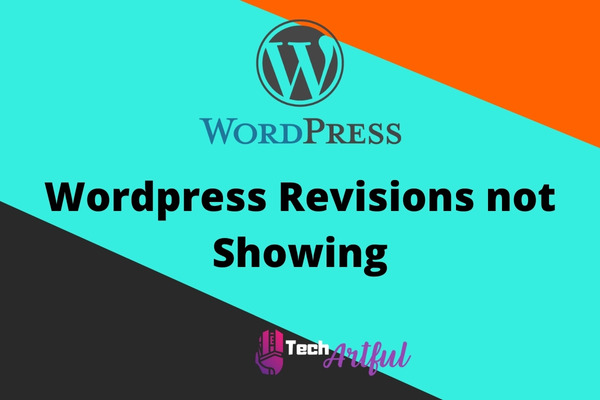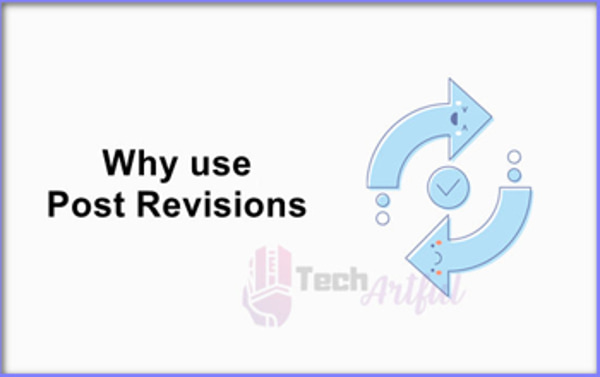WordPress allows you to edit multiple pages in a row. Its block editor has a feature that shows you the edit history.
It is not like an autosave that saves every input every 60 seconds. Instead, it even stores the previous versions.
That said, the feature we are talking about is WordPress Revisions. Through it, you can even get the previously written versions back.
But what if WordPress Revisions not showing?
If the revision history doesn’t show up, it doesn’t mean you lost all that you had written before. There is a fix to this problem, which we will be discussing in this article.
So, let’s not waste time and dive right into the discussion.
What are WordPress Post Revisions?
The Post Revisions feature on WordPress allows you to access the previous state of the documents you edited. You can retract the changes and use the versions you edited once through this feature.
When you are working on WordPress, it stores a temporary version for each draft. And that version is automatically stored by another feature called auto-save. This auto-save is on the block editor of WordPress, and it autosaves edits every 60 seconds.
In any situation, if your browser or OS crashes, this auto-save is of great use as it will enable you to restore your edits at any time.
However, revisions and auto-save are inherently different. Auto-Save stores the edits on the browser, whereas Revisions store them on the WordPress database.
Why use Post Revisions
As a WordPress user, you can benefit from Post Revisions to a great extent. Writing and curating content requires a lot of edits and tuning for perfection. When you see the older versions, you better view the improvements you made through post revisions.
That said, you can pick up factions from the draft state and then align them with the new version to give the publication the best form.
Moreover, Post Revisions will enable you to manage multi-author sites and optimize them accordingly.
Why are WordPress Revisions not showing
You often may feel that the version of the post you edited was much better than the current one. In such cases, WordPress Revisions helps get that version back.
But what if you don’t find this feature in your dashboard?
It doesn’t mean that the feature is absent or your edits aren’t stored in the database. The feature somehow got hidden, so you feel as if this is a sort of error.
There can be several reasons behind it. The most common cause is that most users often forget to save the post, which results in the posts not getting stored in revisions.
Another probable reason can be the issue with the WordPress theme. There can be instances where a few themes might not support Revisions. And due to this, you won’t be able to view the previous versions of edits.
Lastly, this issue can also be caused by some plugins, limiting Revisions’ usage.
How to fix WordPress Revisions not showing
There are two specific ways to resolve this issue. One way is to try out manual enabling of the Revision from the server, and the other is using the default feature.
The default feature is much simple and easy to pull off. It will be much more straightforward for you if you are new to this. For this, you need to use the screen options for enabling the feature.
Here is a complete breakdown of the steps to enable using the default method:
- Click on Posts on the left side of the screen and select All Posts.
- Move down and choose the option
- Click on Screen Options as you open the post editor.
- Select Revisions on the edit screen.
Thus, you are done with the process, and you will be able to see all the changes that any author made on the revision panel.
Now, let us go through the manual way.
You can use the manual option when the theme doesn’t possess any Screen option feature.
Before carrying out this process, we recommend you back up your website as some core changes will occur. The main reason behind this is that you will require editing the wp-config.php of your website.
That said, here are the steps you need to follow:
- Sign in to your FTP client.
- Download the wp-config.php file on your system.
- Open the downloaded file on Notepad.
- Look for WP_POST_REVISION’, FALSE in the Notepad by pressing CTRL+F.
- Swap this with WP_POST_REVISION’, TRUE in the Notepad.
- Save the changes you made.
After you have completed this process, you will view the Post Revisions.
How to use WordPress Revisions
Using WordPress Revisions isn’t any complicated task. When using the block editor, you’ll identify a document panel with a good number of features. These features are highly dedicated to optimizing and editing pages and posts.
You’ll also know the actual number of revisions under the post tab.
Now, when you click on that particular revisions part, that navigates you to all the available versions of the content. There is a navigation slider with which you can switch between these versions. The best part is that it includes a feature that allows you to compare two revisions.
If you are using the classic editor, the revisions will be available in the publish section on the dashboard.
Limitations of WordPress Revisions
There is no doubt that WordPress Revisions are practical and beneficial. But if you don’t manage them correctly, they will have negative implications for your website.
If you have the default settings, the number of post revisions won’t be limited to a particular post or page.
Besides having multiple posts and pages on your website, each post will have various revisions in your database. Eventually, it will clutter up your database with irrelevant stuff.
Too much data in your database will consume more server resources, potentially slowing down your website and resulting in a poor user experience.
As a result, it is critical to properly manage revisions so that they do not slow down your website.
How to clean up WordPress Revisions
Cleaning up the older revisions stored in the database is often necessary. These revisions are harmless, and they won’t tweak the data and contents of your website. But sometimes, storing too much content may slow down the website’s responsiveness.
Therefore, deleting some of the older revisions that aren’t of any user won’t cause any severe issues.
To delete these extra revisions, you need to install and activate the WP-Optimize plugin. After activation, navigate to the ‘Database’ section and click on ‘Clean all post revisions. Then, click on the run optimization to clean up the previous revisions.
You can delete the plugin to free up some space in your database when you’re finished.
Now, for advanced WordPress users installing phpMyAdmin would be the task. You can pull off this process using the WordPress control panel. Here, you will need the usage of the SQL interface to run the commands.
Bottom Line
Using WordPress revisions allows you to curate content perfectly. It enables you to revert to the previous versions and draw comparisons, which always increases the scope of improvement.
In this article, we have shown you how to fix the not showing up issue of WordPress Revisions. And along with that, we have portrayed various things associated with it. We hope that serves your purpose and improves your experience using this feature from WordPress.



